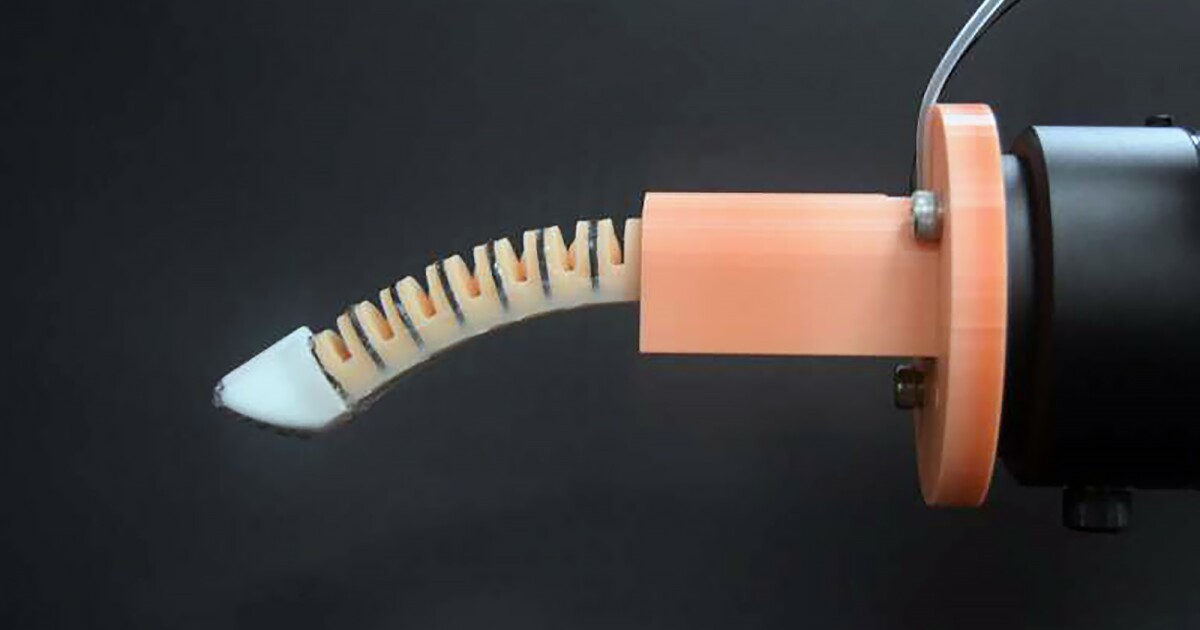Scientists have developed an ultrasensitive robotic “finger” similar to a person who is able to safely perform a routine physical examination as if a doctor. It is said that “RobodoCtor” can soon be seen in medical clinics.
Doctors’ fingers are diagnostic tools used for all trips of things about you and your health. Fingers are used by medical experts to take their pulse, for example, to feel around the unusual lumps in the tissue under the skin, and are inserted into, dark and warm places for diagnostics purposes.
Now scientists from the precise machines department and accurate instrumentation at the University of Science and Technology in China (USC) have created a person disturbed, bent robotic “finger” to perform routine routine medical examinations such as the above.
“Physical examination is one of the most widely agile, effective and safe approaches to detect early findings of lumps and other symptoms of breast cancer,” the scientists said. “In traditional Chinese medicine, doctors can take the patient’s pulse on her wrist … to understand his heart conditions.”
“On the one hand, due to the lack of trained, experienced doctors, some diseases or potential risks, it could not be identified in time to avoid deterioration. On the other hand, a large percentage of individuals is not willing to undergo a physical examination, especially those who are examined by a physician of the opposite sex. Robotic palpation thus attracted intense in the research community. ”
Due to the complexes of the human hand, even the most advanced robotic hands still rang well as their skills match. So, for the UstC team to achieve a comparable A-Human tactile scanning for Palpaci-O, which feels for abnomality and proprioception-value to feel the movement and renting of our body parts in a soft robotic finger is very great to act.
Wang et al.
Their BSF, the shortcut for a soft finger with a baaine, consists of a bending news body and integrated multimodal sensing. It has a finger, semicircular shape with a tire structure (network tires), a class of soft actuators composed of a series of channels and chambers inside the elastomer. The BSF bends inwards when it is under pressure to expand these air chambers. Its total length is 129 mm (5.08 inches).
“The proposed BSF has a simple design and only requires measuring resistance and inductance on two terminals to achieve a perception of a person like a person,” the scientists explain. “Like our human finger, BSF can perceive a lot of information about the physical characteristics of objects through active touch.”
Scientists tested how their BSF managed to perform medical palpation as a doctor. It could look for and recognize the lumps of the model in some model tissue on large areas. In addition, “Robofinger” successfully found artery in the wrist of the human participant and measured their pulse. There was no mention of whether the finger was used to perform any type of invasive progostization.
“We show that BSF can press and” feel “the stiffness of the object and perform safe and accurate robotic palpations similar to the stiffness of the doctor,” the scientists said. “In addition, the BSD mounted on the robotic arm (six degrees of freedom) can locate the artery on the wrist of the participant and take (pulses) for real -time analysis. These findings emphasize the potential of “ROBODOCTOR” for carrying out physical tests in the future “.
At least it is unlikely that the BSF will encounter a problem with cold hands.
The study was published in the magazine Cell Reports: Physical Science.

